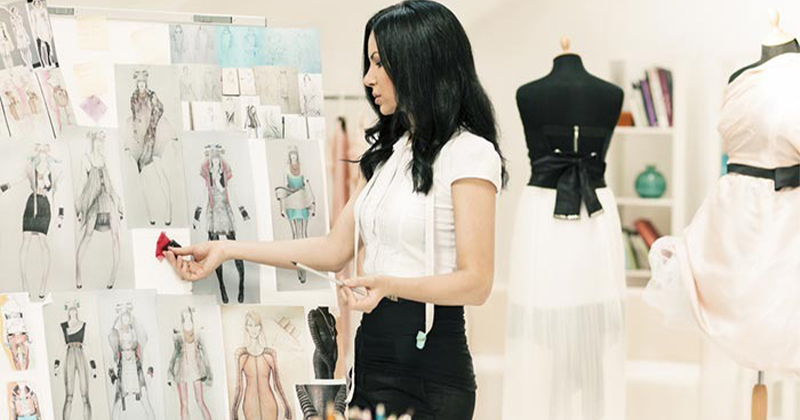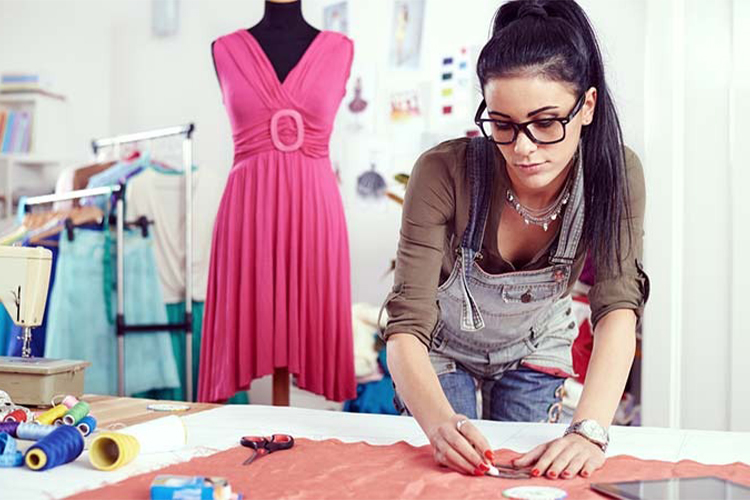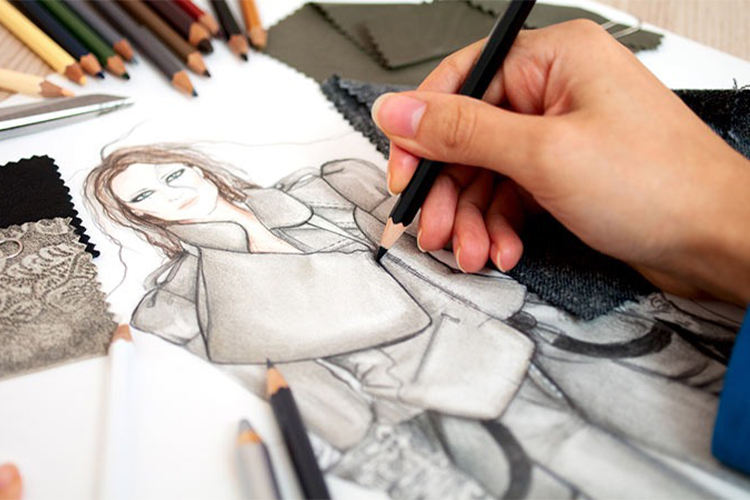
How to Become a Fashion Designer – A Beginner's Guide
If you’re wondering how to become a fashion designer, you’ll be glad you’ve landed on the right page. Today, in this article, we will tell you all the details on how to choose the profession of fashion designer. Well, if you’ve already thought about becoming a fashion designer, you probably have a soft spot for creativity because fashion design is actually an art form that requires tremendous creativity from the designer. If you are interested in fabrics and textures and know how to play with colors and their many shades, then great because you will need the help of these interests. But it is about much more than just the aspects mentioned. You also need to understand how to target audience, analyze markets, define a niche, understand fashion merchandising, and the like. So please scroll down and read this article to learn what it takes to be a successful fashion designer.

What is fashion design?
Let’s just look at the big question and understand what fashion design really is. Simply put, fashion design is all you can think of when talking about clothing and accessories. It is about the application of the art form in creating designs that are aesthetically influenced by social, geographic, economic and cultural conditions. And fashion design and related courses will give you orientation, structure and understanding of all the essential elements before you get there. Some courses deal more with certain attributes than the others, depending on the niche and eventually the specialization. So at some point you also have to think about which part of the spectrum you want to hold on to.
Learn how to become a fashion designer
If you want to become a fashion designer, there are several options – one of them is to take the conventional and more practical route and take a fashion design course. Or do it the not-so-conventional way without a certificate/diploma or degree and let your passion take precedence. Some might argue that you don’t need a degree to become a fashion designer, but you have to understand that it’s not an easy task. However, given the passion for the subject, it will be worth it. There is no right or wrong way of doing things, and there is no fixed recipe for success.
While formal fashion design education takes a structured approach, the direct or informal approach is entirely up to you and the effort, time, energy, etc. you put into making your dream come true.
You should be prepared for this:
1. Sewing skills
The basis of making a garment is sewing. So, as a budding fashion designer, you should improve your sewing skills. Understanding the techniques makes sketching easier. You deal with the texture of different fabrics and textiles and work with each of them. Sewing patterns and garment construction form the foundation of your skills. The designs unintentionally depend on several such factors. If you closely observe the work of some designers, there is a distinctive stitch, style, or technique that underlies their work. This includes experience, experimentation, research and understanding of the topic. As a beginner, give yourself plenty of time to improve this skill and it will help you a lot on your way up.

2. Design
In order to successfully design garments and create your collection, many important elements need to be brought together.
Sketching is of course the first big step in this process and the basic framework for building the outfit. First draw a rough sketch, that’s a good start. Also because writing it down is something different than visualizing it! That’s the only way you can improvise. So be prepared to sketch a lot.
Choosing the fabric and what you want to make out of it is the next big thing. While you can be creative and futuristic with patterns and prints, without the right colors and even the right shades, everything can fail. Each color comes in a million shades, and getting the exact shade spot on is an art in itself. An eye for detail is what you need. So when you look at an important collection, you see that the designer takes a theme and plays extensively with each color and pattern. It’s quite a balancing act.
Technical details that most of us laypeople don’t understand. It’s nothing short of science as you take your rough sketch to the next level and turn it into the design of each garment. How else do you think so many body types fall into one size category? Large companies have a team that works on a multitude of aspects for each collection, while deciding the sizes, customizing each pattern and making sure every piece of that puzzle fits together.
3. Establish a niche
As a beginner, all fashion enthusiasts want to do haute couture and believe that making expensive clothes will give them a breakthrough. However, this is not true and is exactly the opposite. Also, there’s a lot more than haute couture, the markets have opened up a lot and if you’re really good you can open up a whole new dimension. Depending on where your interest lies, slowly start thinking about a niche as you advance in your fashion design course/internship/career. Here are your options:
Haute Couture – Made to Measure or Haute Couture began in the era when each garment or dress was made for a specific client. When it comes to fabrics, colors, technology and fit, more value is placed on details than on price. Only elite members of society had access to designers who made haute couture dresses. However, times have changed and the talent pool has grown. Haute couture is now more accessible – from catwalks to flagship stores to red carpets – they’re everywhere. While it’s every fashion designer’s dream to eventually get there, it’s not a good first step. With perseverance, however, you can still reach your goal.
Mass Production – It’s the exact opposite of haute couture. These outfits are available in large quantities and for everyone, and they are also inexpensive. Big brands, with their team of designers, choose a specific model, type or pattern that is trending this season and make the outfits by machine. A business model that is considered the most profitable, since it offers a greater number of opportunities that cover the relatively low cost of production.
Ready-to-Wear (Pret-a-Porter) – The next big thing in fashion is ready-to-wear, an in-between variant of the two. As a result, the designers who present their work at exhibitions, on catwalks and on red carpets also produce similarly high-quality garments, albeit in smaller quantities. These outfits are exclusive yet ready to wear.

4. Customer needs analysis by identifying gaps in the industry
You can’t compete in more than one boat, so first select an industry and then do extensive research on it. The industry can be anywhere between menswear, womenswear, childrenswear, sports, bridal, athleisure, or a combination of two or more. Fashion design courses also teach you research techniques to help you analyze your chosen industry. You need to dig deeper to understand the needs of your niche and see if there’s an entry point for you. If there is a gap, identify ways and where to publish your collection. This pre-production requires a lot of brainstorming and done right, half the battle is won.
5. Fashion Shopping and Merchandising
Another interesting and important aspect of becoming a successful fashion designer is understanding the pricing techniques based on production costs and associated overheads. Fashion merchandising is a subject in itself that teaches you consumer behavior, pricing and the economics of running a profitable fashion business. Passion is one thing, but running a business is a whole new game and not for everyone. Getting to know the market is crucial for your presence in order to recognize which trends are in demand.
6. Market Analysis and Strategy
Whether you choose to pursue fashion design under a label after your degree or to pursue the path of fashion entrepreneurship, you need to understand the other necessary fringe areas that need to be honed alongside the actual craft. Fashion marketing is necessary to be able to share your creations with the crowd. While designing clothes is one thing, understanding market conditions and having a strategy for bringing them to market is equally important. Knowing the pulse of your market and customers is what takes your fashion business to the next level.
7. Understand the target audience
Understand the demographics and target audience. In fact, you need to know this even before creating your collection. Put yourself in the shoes of your target audience – think about what you would expect from a brand. This is a good starting point and makes the process less tedious. Understanding branding, building a good portfolio, attending fashion shows—all of these processes will help you figure out which audience you’re trying to target. Working together with the underlying factors sets you apart. Some of it you learn in theory, the rest you learn from experience.
trending now
Quick Links:
join the club
Categories:
COPYRIGHT © 2025 HOME ON THE GROVE.
